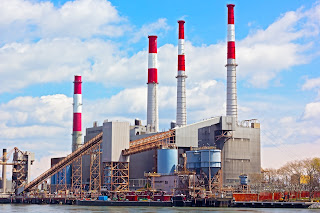Pulse Burst Radar sends short bursts of energy to the surface of a liquid. The time it takes for a signal to be reflected off the liquid surface is measured by ultra-high-speed timing circuitry.
Filtering out false reflections and other background noises is accomplished through sophisticated signal processing. The precise level is then calculated by taking tank height and additional configuration information into account. Because the circuitry is highly energy-efficient, no duty cycling is required, as with other radar devices. This enables the device to track rapid level changes of up to 4.5 m/minute (180"/min).
Magnetrol uses Pulse Burst Radar for Radar level measurement rather than frequency modulated continuous wave (FMCW), which is today's more common operational technology. Pulse Burst Radar operates in the time domain and does not necessitate the complex and costly processing required for FMCW.
Pulse Burst Radar is more efficient at sorting through extraneous echoes and selecting the one reflected by the actual level because echoes are discrete and separated in time. Pulse Burst Radar also has excellent averaging characteristics, vital in applications where the return signal is affected by the factors described in "Don't Forget the 3 D's of Radar" below.
Unlike actual pulse devices, which send a single sharp (fast rise-time) waveform of wide-band energy, Pulse Burst Radar sends out short bursts of 6 GHz or 26 GHz energy and measures the transit time of the signal reflected from the liquid surface. The following equation is used to calculate distance:
Distance = C x Transit Time/2, (where C = Speed of Light)
The level value is then calculated by taking tank height and other configuration information into account. The sensor reference point – the bottom of an NPT thread, top of a BSP thread, or face of a flange – is the exact reference point for distance and level calculations.
Remember the 3 D's of Radar
Three fundamental conditions influence radar applications:
- The process medium's dielectric;
- The application's distance, or measuring range; and
- A wide range of disturbances can weaken or distort the radar signal.
Low dielectric media can weaken radar's return signal, reducing the effective measurement range of a device. Pulse Burst Radar provides accurate measurements even in low dielectrics. However, when the dielectric is extremely low, as with liquid gas, fuels, and solvents, or when boiling and/or flashing can occur, Guided Wave Radar (GWR) may be the better choice in radar technology.
The distance, or measurement range, of Pulse Burst Radar, is determined by the antenna used, the dielectric constant of the medium, and the presence of signal interference. Turbulence, foam, false targets (interior tank obstructions causing false echoes), multiple reflections (reflections off the tank roof), and a frequent level change rate can all weaken, scatter, or multiply radar signals. Excessively high or extremely low liquid levels can also be problematic.
The Processing of Signals
Because radar exhibits interference effects similar to those seen in light, the signal processing function is critical. The quality of a device's signal processing is what distinguishes today's cutting-edge radar transmitters from the rest.
Pulse Burst Radar extracts accurate levels from false targets and background noise through its sophisticated signal processing capabilities. Because pulse burst radar circuitry is highly energy-efficient, no duty cycling is required to achieve effective measurement. As a result, Pulse Burst Radar can track high rates of change that would be impossible to track with other loop-powered radar transmitters. Although Pulse Burst Radar has a robust false target recognition and rejection routine, proper installation significantly minimizes false target reflections.
Antennas
The radar signal is transmitted and received by the antenna on the transmitter. Each antenna's maximum measuring range is primarily determined by dielectric constants and the degree of turbulence. Horn antennas can measure dielectric media as low as 1.4, whereas rod antennas have a minimum dielectric of 1.7.
Benefits
Pulse Burst Radar measures a wide range of media accurately and reliably in a wide range of process conditions, from calm product surfaces and water-based media to turbulent surfaces and aggressive hydrocarbon media. As a non-contact device, Pulse Burst Radar is immune to the complications that can occur when a probe comes into contact with the process media, such as coating from high viscosity media or corrosive attack from aggressive chemicals. Given the cost of extended probe lengths, the greater the measuring range, the more radar proves to be the cost-effective solution. Temperatures, pressures, the presence of vapors, and air movement within a vessel's free space have little effect on the radar. Specific gravity, conductivity, and dielectric constant changes do not affect measurement accuracy. The lack of moving parts in a 100% electronic instrument translates into low maintenance costs, and, as a two-wire, loop-powered device, power requirements and installation are greatly simplified.
Miller Energy, Inc.
https://millerenergy.com
In New York Metro and Northern NJ
Phone: 800-631-5454
In Eastern Pennsylvania and Delaware:
Phone: 610-363-6200
In Western Pennsylvania:
Phone: 412-257-0200
In Ohio:
Phone: 440-735-0100












